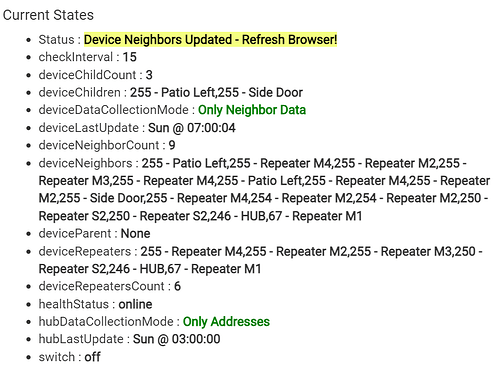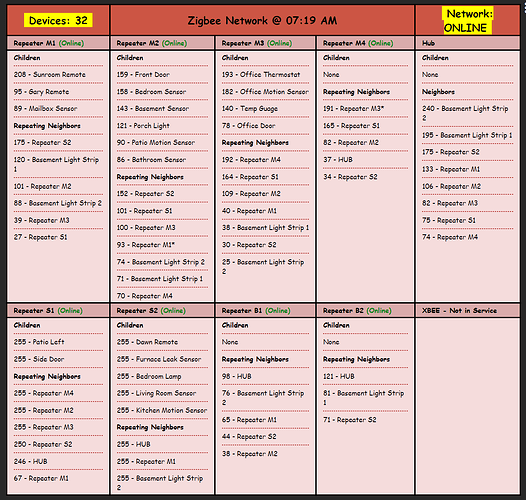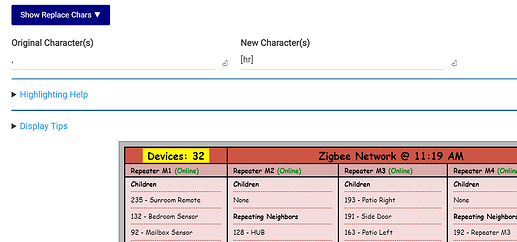I've always tested if a repeater is actually extending my network by physically moving the sensors beyond hub range but within the repeaters range... but every so often the tests are just inconclusive..
This keeps giving me a headache.. Such as last week, I would test connectivity by triggering a door sensor or pushing a zigbee button, that's away from hub range, without a repeater in between, and then put repeater in between... I was using a couple of sonoff power plugs as repeaters.
With the repeater activated, sometimes it works, sometimes it doesn't.. and yes I do turn off the hub for a few minutes when making changes so that the sensor re-aligns itself and finds the best mesh path to hub.
The worst is that when we test things, everything is great. We leave the site.. then days after we get report that the sensor isn't working and sure enough the sensor is out of range again, even when repeater is still deployed.. and we end up having to redo the process ..
Is there a more accurate and reliable way to check if a repeater is really working and repeating signals well?
While where at this topic, is there a way to test if a device is actually a repeater?
I know most powered devices are repeaters themselves...
Like I'm using this sonoff smart plug w/c is supposed to be a repeater

Now I'm having doubts if this model indeed acting as a repeater or not, or perhaps this unit is a dud and its repeating functions are not working (????)
Would love some advises. Thank you








